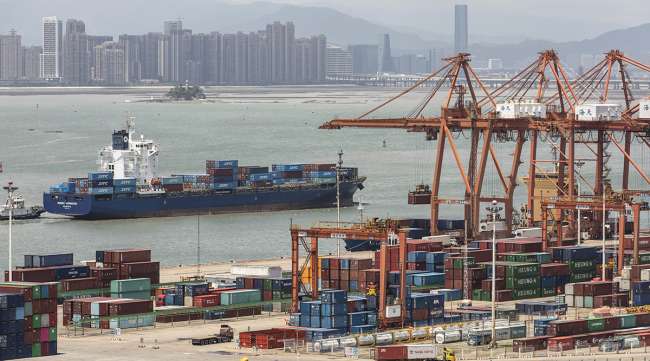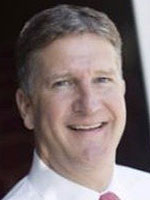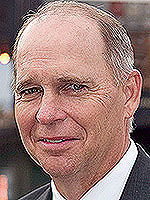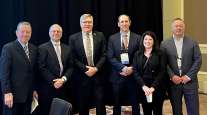Senior Reporter
New AAPA CEO Chris Connor Jumps Into US-China Trade Dispute

[Stay on top of transportation news: Get TTNews in your inbox.]
Chris Connor, the new president and CEO of the American Association of Port Authorities, knows his way around shipping after nearly 40 years in the industry, but his challenge now is to learn the perspective of port operators and government agencies regulating the facilities.
Connor took over the top spot of the Alexandria, Va.-based trade association Oct. 16, succeeding Kurt Nagle, who retired after 35 years with the organization,and nearly 25 as its leader.

Connor
Since taking the helm, Connor has been getting to know port operators, even as he is urging the White House to negotiate a new trade agreement with China.
Connor said he realizes he is beginning this new position at a time when the ports are playing a much bigger role in the U.S. economy, but the trade dispute between the United States and China is threatening some of the growth of the last several years.
“I don’t think anybody would debate that it was time to address the China situation, I don’t think there’s any argument about that,” Connor said. “But I think unfortunately it sort of has turned from a strategic intent to now a tit-for-tat battle where 70% of the bilateral trade is encompassed in these tariffs, and if the Dec. 15 tariffs go ahead as planned it will be up to 85% of the bilateral trade.”

Nagle
On that date, more than $100 billion in new tariffs could be imposed on Chinese products being imported into the United States if no new deal is finalized. Shoes, clothing, cellphones, laptops and other electronic gear, microwave ovens, ceiling fans, washers and dryers are among the items that could become more expensive.
Connor said he is optimistic the two gigantic trading partners will pull back from their hardened positions and possibly reduce some of the tariffs before they do more damage.
“The trade picture right now is so distorted, because of the tariff complications, if I can say it that way, that are in play right now. So the whole pattern of the way how cargo is flowing is a little hard to see through,” said Connor, adding that port officials recognize “rational and sober thinkers will kind of win the day and there will be a solution to this situation they are in right now.”
He continued: “The long-term wins the day and I think that’s why you’re seeing the ports investing in their infrastructure.”
Over the next five years ports big and small have plans to spend millions of dollars on projects that include deepening shipping channels, buying additional cranes, and expanding roads to connect the facilities to warehouses that are popping up across the nation in response to growth in e-commerce.
During a press conference in Washington on Nov. 12 with Port of Los Angeles executive director Gene Seroka and others, about how tariffs could impact as many as 1.4 million high-paying jobs if they continue to be imposed, Connor said: “Some businesses might decide to eat the tariffs, so it impacts their profitability and it has downstream implications for them, or they pass it along to the consumers so the consumer is paying for it out of their pocketbook.”
Connor has led a number of transatlantic shipping companies, including United States Lines, Crowley Maritime and Wallenius Wilhelmsen Logistics.
.@AAPA_Seaports is happy to support @PortofLA's new trade study, "By The Numbers: Jeopardizing the National Benefits of Trade
Through America’s Busiest Port Complex." #TariffsHurt https://t.co/hk5lKTBzcf pic.twitter.com/CCaHXqDvV4 — AAPA (@AAPA_Seaports) November 12, 2019
He described his current role partly as an educator in Washington, trying to show the importance of the ports.
“The importance that seaports really have in this economy is just not well appreciated, not well understood,” Connor said. “Mission one, job one, for AAPA is getting that message out there and I’m happy to have a part of that, and be a part of that moment.”
Want more news? Listen to today's daily briefing:




